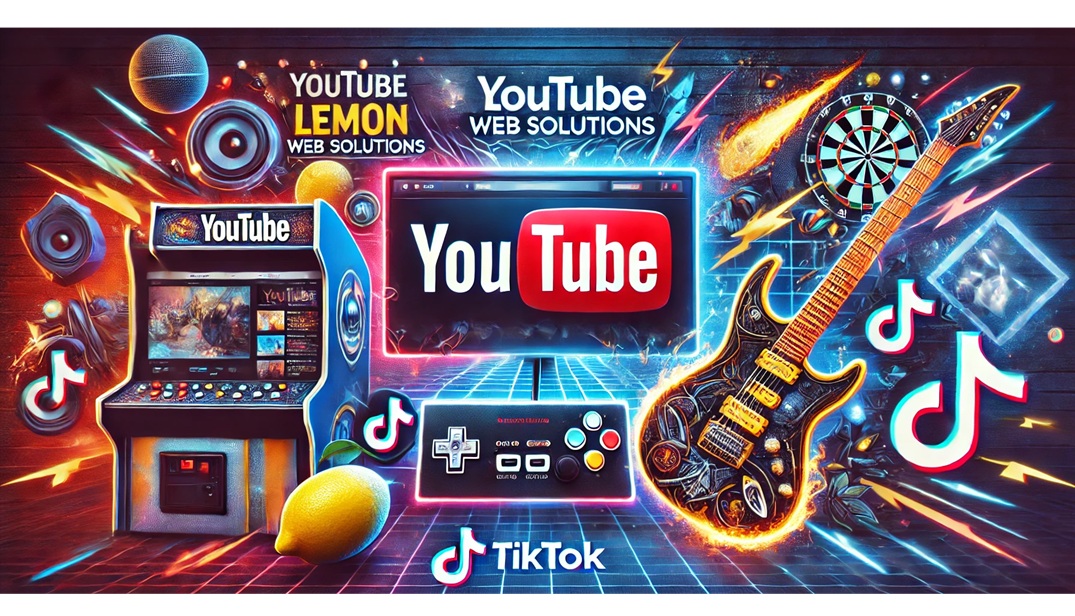LEMON BLOG
If there's one thing we're hearing from every corner of the tech world, it's this: AI proficiency is no longer a nice-to-have—it's becoming essential. Over the past two decades, Google has been at the forefront of expanding global digital literacy, helping millions build foundational digital skills. Now, as the pace of innovation accelerates, Google has taken a significant step further to meet our evolving needs.
For years, GIMP has been the go-to open-source alternative to Photoshop — a powerful, free image editor used by millions across the world. But when it came to getting GIMP on Linux through Snap, something always felt a bit off. While you could install it from the Snap Store, the version there wasn't actually maintained by the official GIMP team. Instead, it came from the Snapcrafters community, a group of volunteers who package software for Snap.
When Google first introduced its Privacy Sandbox, the company promised a future where users could browse the web with less tracking and more privacy — all while keeping advertisers happy. Fast forward six years, and that vision has officially come to an end. Google has now confirmed that the project is being "phased out", marking a major shift in how the world's most popular browser handles user data.
Touch 'n Go eWallet (TnG) has just launched something exciting for travellers — the new Visa Travel Card, designed specifically for Malaysians who love exploring the world. With perks like up to 3% cashback, zero foreign exchange markup, and one free overseas ATM withdrawal every month, it's clear that TnG wants to make international spending more rewarding and hassle-free.
Apple is giving users even more control over the look and feel of its latest interface design. The newest developer betas for iOS 26.1, iPadOS 26.1, and macOS 26.1 introduce a new Liquid Glass visibility setting — a visual tweak that changes how transparent system elements appear across menus, notifications, and apps.
Deepavali, the Festival of Lights, is a time of warmth, celebration, and reflection—a moment where light triumphs over darkness, and music often becomes part of the joy. To mark this year's Deepavali 2025, I decided to create a guitar cover of Dilwali, a song that perfectly captures the spirit of happiness and togetherness that defines the season.
Deepavali — or Diwali as it's known in many parts of the world — is more than just a festival of lights. It's a celebration of triumph, renewal, and the inner spark that keeps us moving forward even through the darkest times. As 2025 brings new beginnings and reflections, we at Lemon Web Solutions would like to take a moment to wish everyone a truly Happy Deepavali filled with light, joy, and togetherness.
When The Legend of Zelda: Ocarina of Time released on the Nintendo 64 in 1998, it didn't just raise the bar — it rewrote the rules of game design forever. It was Nintendo's masterpiece, a seamless blend of adventure, storytelling, and innovation that transformed 3D gaming into something emotional, cinematic, and unforgettable.
When Lode Runner 3D hit the Nintendo 64 in 1999, it wasn't just another remake — it was a bold reinvention of one of gaming's earliest puzzle-platform icons. Taking the addictive, brain-twisting gameplay of the 1980s original and reimagining it in full 3D, this was Hudson Soft's ambitious attempt to bring a classic into a new dimension.
When Mario Party launched on the Nintendo 64 in 1998, it didn't just introduce a new kind of game — it created a new kind of chaos. It was the first time Nintendo turned Mario's world into a board game, blending dice rolls, power-ups, and ruthless mini-games into a multiplayer experience that was as hilarious as it was brutal.
When Resident Evil first launched on the PlayStation in 1996, it didn't just introduce players to zombies — it introduced an entirely new genre. Equal parts puzzle, panic, and pure dread, it became the defining moment for survival horror, setting the standard for decades of games that followed.
When NASCAR 2000 sped onto the PlayStation in 1999, it captured the unmistakable roar of late-90s motorsport and the intensity of America's most iconic racing series. Developed by EA Sports, this entry delivered pure adrenaline — blending simulation, speed, and the raw spectacle of stock car racing into a package that became a fan favorite for years.
When Mario vs. Donkey Kong hit the Nintendo DS, it wasn't just another Mario spin-off — it was the rebirth of one of gaming's oldest rivalries. What started in arcades back in 1981 as a simple climb-to-the-top challenge evolved into a clever puzzle-platformer that blended nostalgia, precision, and ingenuity.
When New Super Mario Bros launched on the Nintendo DS in 2006, it marked a homecoming — a triumphant return to Mario's side-scrolling roots after years of 3D adventures. It wasn't just a nostalgia trip. It was Nintendo proving that timeless gameplay never truly fades — it just evolves.
When Pokémon Conquest arrived on the Nintendo DS in 2012, it wasn't just another Pokémon spin-off — it was a bold experiment that fused two unlikely worlds: Nintendo's beloved monster-catching universe and the grand strategy of Nobunaga's Ambition. What could have been a gimmick instead became one of the most unique and rewarding Pokémon experiences ever made.
Before cinematic choice-driven adventures became mainstream, a stick figure named Henry showed the internet how fun — and hilarious — interactive storytelling could be. The Henry Stickmin Legacy Collection is a celebration of that creativity — six games that combine absurd humor, clever animation, and countless branching paths that defined the golden age of Flash gaming.
By the time Bloons Tower Defense 5 launched in 2011, Ninja Kiwi had already established itself as the king of the tower defense genre. But this fifth installment was something special — a complete transformation that elevated Bloons TD from a browser-based Flash game into a full-featured modern experience.
By 2009, the Bloons Tower Defense series had become one of the most recognizable names in browser gaming. With Bloons Tower Defense 4, Ninja Kiwi took everything fans loved about the series and polished it to near perfection. Sharper graphics, dynamic maps, and deeper upgrade paths made this the biggest leap forward in the franchise's history — a turning point that bridged the classic Flash era with the modern tower defense experience we know today.
By the time Bloons Tower Defense 3 arrived in 2008, Ninja Kiwi had turned a simple idea into a worldwide phenomenon. What began as a small Flash experiment had grown into a full-fledged tower defense experience — richer visuals, smarter gameplay, and more tactical freedom than ever before.
Just a few months after the original balloon-popping sensation took the web by storm, Ninja Kiwi returned with Bloons Tower Defense 2 — the sequel that proved lightning could strike twice. Released in 2007, this follow-up refined everything players loved about the first game: sharper visuals, tougher enemies, and deeper strategy, all wrapped in that simple yet irresistible Flash-era charm.
Before there were hundreds of towers, Monkey Knowledge trees, and complex upgrade paths, there was simply a dart, a monkey, and a wave of colorful balloons. Bloons Tower Defense (Bloons TD 1), released in 2007 by Ninja Kiwi, began as a humble Flash game — but it laid the foundation for one of the most iconic and addictive strategy franchises ever created.
In 1995, Nintendo took a creative leap that redefined what a platformer could be. Super Mario World 2: Yoshi's Island (SNES) was more than just a sequel — it was a bold artistic experiment that placed the spotlight on Mario's trusty companion, Yoshi, and introduced a whimsical visual style that looked like a child's drawing come to life.
By 1994, the Streets of Rage series had already become a cornerstone of Sega's 16-bit legacy. With Streets of Rage 3, Sega AM7 and Ancient set out to deliver the most ambitious entry yet — faster, harder, and darker. It wasn't just another sequel; it was the grand finale of Sega's legendary beat 'em up trilogy.
When Streets of Rage 2 arrived on the Sega Mega Drive in 1992, it wasn't just a sequel — it was a statement. Building upon the foundation of the original, SEGA AM7 and Ancient delivered a follow-up that improved every aspect of the formula: richer graphics, smoother animations, expanded move sets, and one of the most unforgettable soundtracks ever produced for a 16-bit console.
In 1991, Streets of Rage hit the Sega Mega Drive (known as Genesis in North America) and instantly became one of the console's defining titles. Developed by SEGA AM7, this side-scrolling beat 'em up was Sega's answer to Final Fight — and it did more than compete. It built a franchise that would define urban brawlers for a generation.
LEMON VIDEO CHANNELS
Step into a world where web design & development, gaming & retro gaming, and guitar covers & shredding collide! Whether you're looking for expert web development insights, nostalgic arcade action, or electrifying guitar solos, this is the place for you. Now also featuring content on TikTok, we’re bringing creativity, music, and tech straight to your screen. Subscribe and join the ride—because the future is bold, fun, and full of possibilities!

Get notified when there's new article



